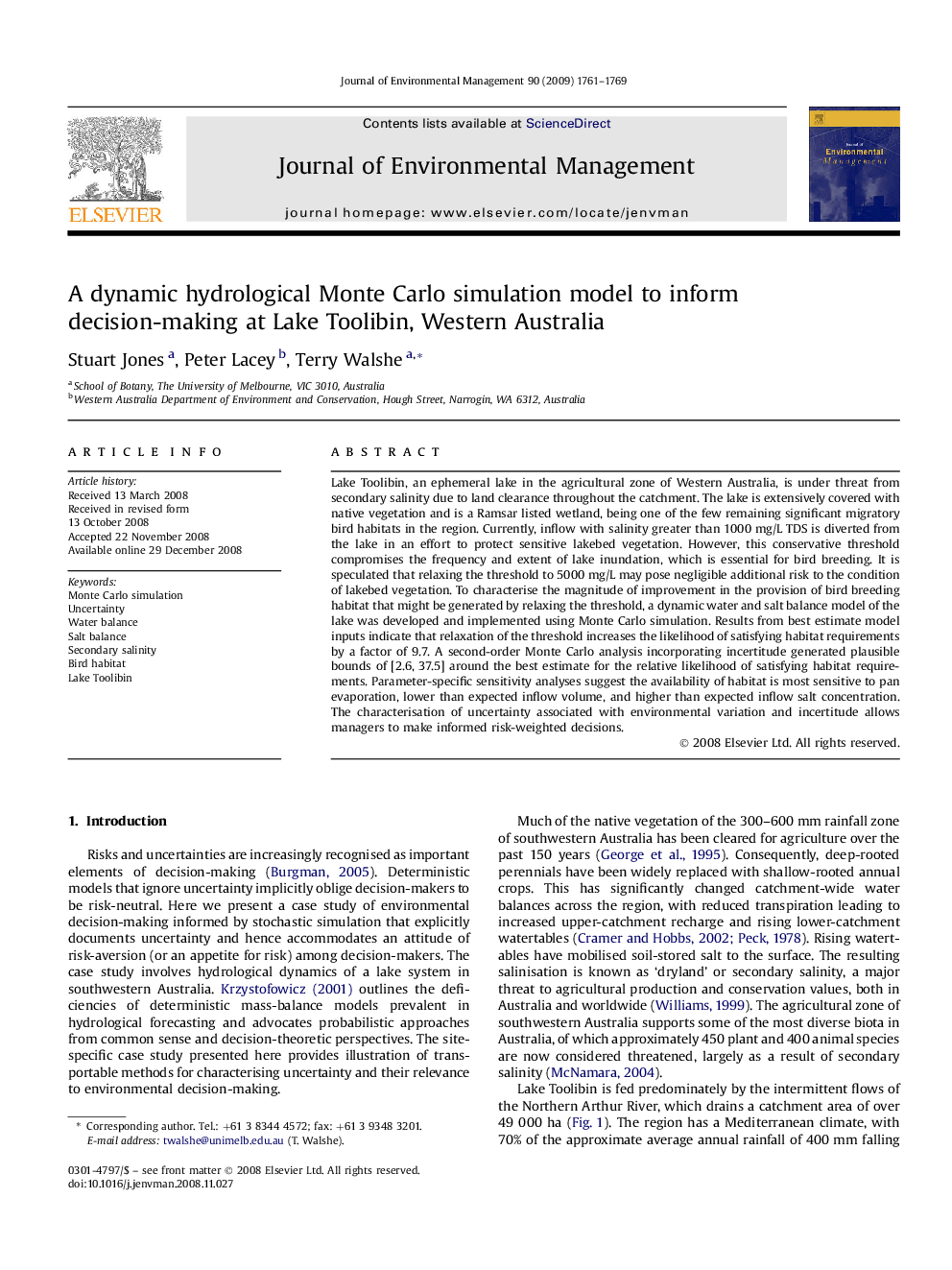| Article ID | Journal | Published Year | Pages | File Type |
|---|---|---|---|---|
| 1057367 | Journal of Environmental Management | 2009 | 9 Pages |
Lake Toolibin, an ephemeral lake in the agricultural zone of Western Australia, is under threat from secondary salinity due to land clearance throughout the catchment. The lake is extensively covered with native vegetation and is a Ramsar listed wetland, being one of the few remaining significant migratory bird habitats in the region. Currently, inflow with salinity greater than 1000 mg/L TDS is diverted from the lake in an effort to protect sensitive lakebed vegetation. However, this conservative threshold compromises the frequency and extent of lake inundation, which is essential for bird breeding. It is speculated that relaxing the threshold to 5000 mg/L may pose negligible additional risk to the condition of lakebed vegetation. To characterise the magnitude of improvement in the provision of bird breeding habitat that might be generated by relaxing the threshold, a dynamic water and salt balance model of the lake was developed and implemented using Monte Carlo simulation. Results from best estimate model inputs indicate that relaxation of the threshold increases the likelihood of satisfying habitat requirements by a factor of 9.7. A second-order Monte Carlo analysis incorporating incertitude generated plausible bounds of [2.6, 37.5] around the best estimate for the relative likelihood of satisfying habitat requirements. Parameter-specific sensitivity analyses suggest the availability of habitat is most sensitive to pan evaporation, lower than expected inflow volume, and higher than expected inflow salt concentration. The characterisation of uncertainty associated with environmental variation and incertitude allows managers to make informed risk-weighted decisions.
